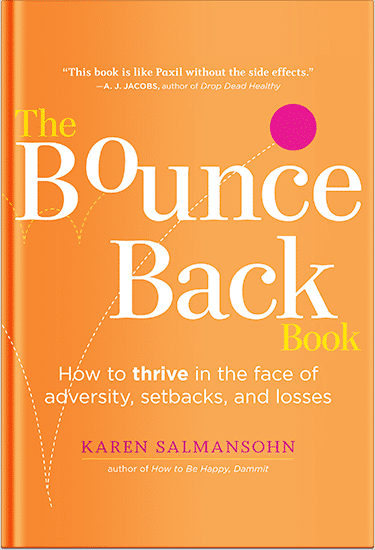 Highways are designed to keep traffic moving quickly and efficiently, but with higher speeds and more vehicles, they’re also places where serious accidents can happen in seconds. From sudden lane changes to unpredictable weather, highway driving demands constant attention and smart decision-making.
Highways are designed to keep traffic moving quickly and efficiently, but with higher speeds and more vehicles, they’re also places where serious accidents can happen in seconds. From sudden lane changes to unpredictable weather, highway driving demands constant attention and smart decision-making.
Whether you’re a new driver or a seasoned commuter, knowing how to stay safe on the highway is crucial for protecting yourself, your passengers, and everyone sharing the road. Are you feeling nervous about highway driving, or maybe you’ve gotten a bit too comfortable with those daily commutes?
Let’s explore essential driving safety rules to help you avoid accidents, handle common highway hazards, and drive with confidence on even the busiest roads.
Give Yourself Room to Breathe
Tailgating is a leading cause of highway accidents, and honestly, it’s one of the most dangerous habits drivers develop. At high speeds, stopping distances increase dramatically. A good rule of thumb is the “three-second rule”: pick a fixed object on the road ahead, and make sure at least three seconds pass before you reach it after the car ahead does.
In bad weather, increase this distance even further. Rain, snow, or fog can turn a manageable situation into a disaster if you’re following too closely. Giving yourself more space allows time to react if the car in front brakes suddenly or if traffic slows unexpectedly. It’s not about being overly cautious, it’s about being smart.
Communicate Your Intentions Clearly
Highway driving requires clear communication with other drivers. Always use your turn signals well in advance of changing lanes or exiting. Signaling gives other drivers time to adjust and prevents sudden maneuvers that can cause collisions. Don’t be that driver who cuts across three lanes at the last second to make an exit.
Don’t rely solely on your mirrors either. Check blind spots by turning your head quickly before moving into another lane. Blind spot monitoring systems help, but they’re not a substitute for a visual check. Taking this simple step can prevent dangerous side-swipes or collisions that could have been easily avoided.
Keep Your Head in the Game
Distracted driving is especially dangerous on highways, where things happen incredibly fast. Put your phone away, avoid adjusting controls while driving, and keep your focus on the road. That text message can wait until you reach your destination.
Long highway drives can also lead to fatigue, which is just as dangerous as distraction. If you start feeling drowsy, pull over safely and take a break. Even a few minutes of rest or stretching can help you stay alert. Your reaction time and awareness are your best defenses against accidents. Ever notice how some drivers seem to drift in their lanes? That’s often fatigue talking.
Know What to Do When Things Go Wrong
Despite your best efforts, emergencies can happen on the highway. If your vehicle breaks down, signal and move to the shoulder as safely as possible. Turn on your hazard lights and stay inside your vehicle if it’s safer than standing near traffic. Standing on the side of a busy highway is incredibly dangerous.
If you’re involved in an accident, call 911, check for injuries, and exchange information with other drivers if possible. Never stand in active lanes of traffic, even after a minor fender bender. Keeping calm and following safety protocols can prevent further harm and potentially save lives.
Speed Limits Aren’t Always the Right Speed
Speed limits are set for ideal conditions, not rain, fog, snow, or heavy traffic. When the weather changes, slow down and increase your following distance. Hydroplaning and black ice are serious risks on highways, even when you’re driving at legal speeds.
Watch for warning signs about curves, construction zones, or reduced visibility. These signs aren’t suggestions, they’re warnings based on real hazards. Aggressive driving and speeding are major contributors to highway crashes, so resist the urge to rush. That extra five minutes you might save isn’t worth the risk.
Small Habits, Big Difference
Highway driving comes with unique challenges, but following essential safety rules can help you avoid accidents and protect yourself and others. From maintaining safe distances to staying alert and adjusting your speed for conditions, small habits make a huge difference on busy roads.
Remember, the goal isn’t just to get there quickly, it’s to arrive safely. By practicing defensive driving and staying focused, you’ll reduce your risk of highway accidents and enjoy smoother, safer journeys. Your family wants you home in one piece, not five minutes earlier.
P.S. Before you zip off to your next Internet pit stop, check out these 2 game changers below - that could dramatically upscale your life.
1. Check Out My Book On Enjoying A Well-Lived Life: It’s called "Your To Die For Life: How to Maximize Joy and Minimize Regret Before Your Time Runs Out." Think of it as your life’s manual to cranking up the volume on joy, meaning, and connection. Learn more here.
2. Life Review Therapy - What if you could get a clear picture of where you are versus where you want to be, and find out exactly why you’re not there yet? That’s what Life Review Therapy is all about.. If you’re serious about transforming your life, let’s talk. Learn more HERE.
Think happier. Think calmer.
Think about subscribing for free weekly tools here.
No SPAM, ever! Read the Privacy Policy for more information.
One last step!
Please go to your inbox and click the confirmation link we just emailed you so you can start to get your free weekly NotSalmon Happiness Tools! Plus, you’ll immediately receive a chunklette of Karen’s bestselling Bounce Back Book!


 Highways are designed to keep traffic moving quickly and efficiently, but with higher speeds and more vehicles, they’re also places where serious accidents can happen in seconds. From sudden lane changes to unpredictable weather,
Highways are designed to keep traffic moving quickly and efficiently, but with higher speeds and more vehicles, they’re also places where serious accidents can happen in seconds. From sudden lane changes to unpredictable weather, 